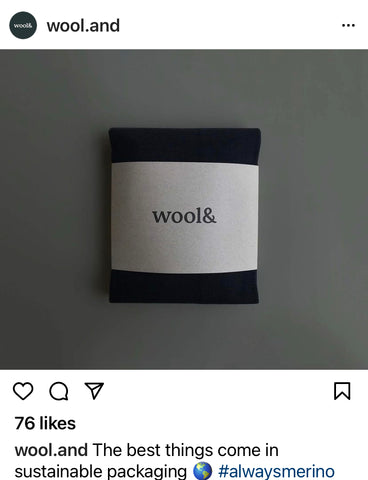Traveling Light with Wool
When the pandemic began, retired with time on my hands I started to re-read classics unopened since childhood, including Walden (one of my father’s bedtime reads to me) and Jane Eyre (ditto). I also started culling my closets. With Henry David Thoreau’s admonition to “simplify, simplify” in mind, I signed up for the 100 Day Dress Challenge of Wool&’s whose motto is “live simply, consume carefully, do good.” I wore its merino wool Rowena dress (at my height it’s more a tunic) for 100 consecutive days. I loved the challenge; my Rowena needed only periodic sponge cleaning and full washing maybe monthly, and I could change its look variously and easily. Only now do I truly understand how Charlotte Brontë’s protagonist Jane could have only three dresses: her everyday dress of “black stuff” (coarse wool); a black silk (for church); and a grey silk for “first-rate occasions.”

As I emptied my closets and upcycled, I committed to limiting my clothes (with some exceptions, e.g., undergarment, slacks, raincoats etc.) to wool garments from companies committed to ethically-sourced apparel, reducing their carbon footprint and respectful of their employees. I replaced my my culled items with a few key, well-made wool items from three companies: Wool&, Ibex and Woolx. (Of course there are other companies; these are the three I chose.)

Though the items I bought can be washed in machines (cool water), I did not buy superwash woolen items. As a lifelong knitter who will not knit with superwash wool, I am well aware the wonderful natural qualities of wool (e.g., water/dirt repellent, warmth, structure, moisture wicking, antimicrobial, etc.) are destroyed by the superwash processing.

During the Challenge, I wore my Rowena with different accessories and garments that changed its appearance. I had lots to choose from as I have drawers filled with hand knits: sweaters, cardigans, vests, gloves, mittens, fingerless mitts, wrist warmers, hats, cowl, headbands and scarves. Of varying weights and from many different natural fibers (e.g., qiviut, cashmere, merino, silk, yak, camelids, goat, and wool — I won’t name every sheep, camelid or goat breed), each has its unique feel and properties.

I was suddenly struck by how easy packing for traveling will be with my new, limited wardrobe. I immediately contacted my dear friend and travel partner D. We agreed to travel each with only an international (smaller than U.S. domestic) sized 2-wheeled carryon (we have same bag, different colors) and a personal item and exchanged ideas on how and what to pack. We’re going with a basic color (black) that will work with our mutual accessories (hers lean toward earth tones, mine toward jewel tones).
Limiting our wardrobe to a few basic wool pieces has simplified packing for our next trip, and we keep our eyes open for other ideas to create nice outfits around them. Though Thoreau would scold me about caring so much about it, I was determined to avoid looking as though I wandered away from my senior hiking group.
Recently I stumbled upon JULAHAS. I read about the company and immediately sent D a text. After emailed exchanges with D and JULAHAS’s founder, Kanak, I ordered a Fusion in plum colors. When it arrived, I immediately donned a travel outfit (black) and started experimenting with the various ways to wear the gorgeous Fusion. Light, colorful, comfortable, warm and versatile, it’s going in my carryon bag!

As I sit writing this essay, I’m wearing the Fusion and looking at the colorful folds. Kudos to Kanak and the artisans of Dev Bhumi! I will treasure it aways as I think of the skilled hands of the woman who wove it.
As D hasn’t yet retired and is busy with her counseling practice, it’s fallen to me to experiment with packing light for our four-week trip in northern Europe during spring or fall. My key goals: (1) keep the final weight of our bags under 8kg/17.6 lbs.; and (2) have no need for a laundromat or dry cleaner.
Each wool shirt, dress or accessory I consider packing I wash in a Scrubba Wash Bag, roll in a travel towel and hang to dry on a travel clothes line. If it doesn’t dry overnight in my cool house (D lives where it’s hot most of the year, very unlike Northern Europe), it doesn’t make the cut.
In my most recent experiment, I packed (in black light wool):
- long sleeved dress (Wool&);
- long sleeved top (Woolx);
- leggings (Wool&);
- undershirt (Ibex);
- glove liners (Ibex); and
- socks (2 pairs).

I included black tights and a non-wool black Macabi (D discovered this travel skirt with amazing pockets). I added some colorful cowls, mitts, a wool vest (all knit by me) and the Fusion cape. I also packed a second pair of shoes; night and undergarments; travel towel; Scrubba bag; travel clothes line; and flip flops.
Success! After adding toiletries my bag weighs under 8kg/17.6 lbs.
Of course not all my clothes will be in the carry on bag. When in transit I’ll wear another pair of shoes and wool socks; a Goretex hooded rain shell; Wool&'s Rowena; a black undershirt (Ibex’s Essential Cami); a hand knit wool vest; a black zip up wool hoodless jacket (Ibex’s Shak); a pair of black pants in a heavy yoga pants-like material but cut like trousers; and, as I run cold, I’ll zip a light hoodless down jacket into its pocket (doubles as a pillow!) and store in my personal item bag.
While Jane Eyre dressed simply because of her humble circumstances, toward the end of the book she’s a financially independent woman and in the final chapter wears a pale blue dress. Despite her changed financial circumstances I think Jane still would agree with Thoreau who advised his friend Harrison Blake to “simplify the problem of life, distinguish the necessary and the real.” We can start with our clothing choices.
- Linda is a guest blogger and a JULAHAS customer.






